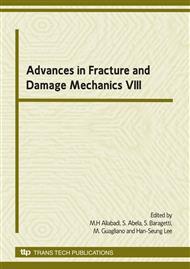p.381
p.385
p.389
p.393
p.397
p.401
p.405
p.409
p.413
Effect of Shot Peening on Residual Stresses and Surface Work-Hardening in Cold Sprayed Coatings
Abstract:
Coating deposition processes such as cold spraying are commonly employed to increase wear and fatigue resistance and consequently to enhance longevity of engineering components. Such processes typically introduce residual stresses into the coated surface, which in turn affect efficiency of coatings and play an important role in coating durability. Present study describes alteration of residual stress state and surface work-hardening of two types of aluminum coatings that are cold sprayed onto aluminum substrate, and subsequently treated by air blast shot peening (ABSP). Residual stress measurements have been made by means of X-ray diffractometer (XRD) on coated samples both before and after shot peening process. The results indicate that that the effect of shot peening is more marked in terms of surface work-hardening than of residual stresses and allow some consideration to correctly orient the choice of peening parameters in practical application.
Info:
Periodical:
Pages:
397-400
Citation:
Online since:
October 2009
Keywords:
Price:
Сopyright:
© 2010 Trans Tech Publications Ltd. All Rights Reserved
Share:
Citation:


